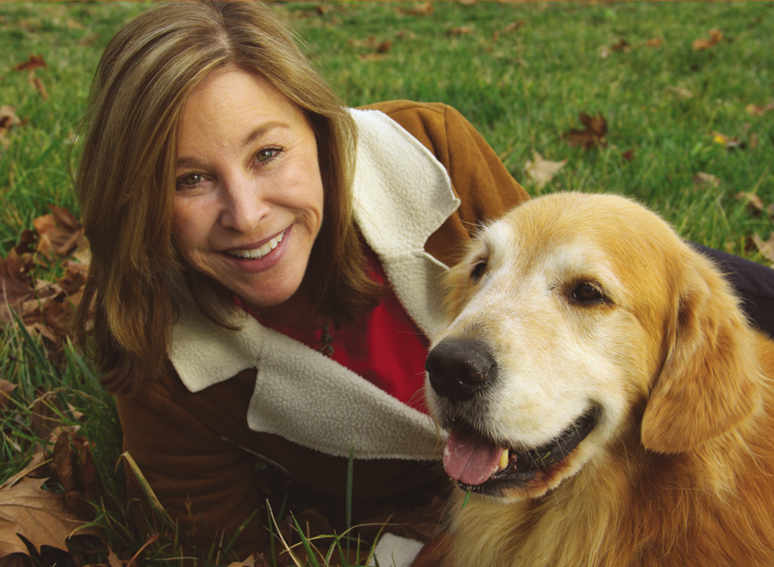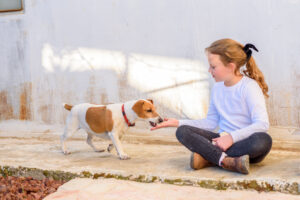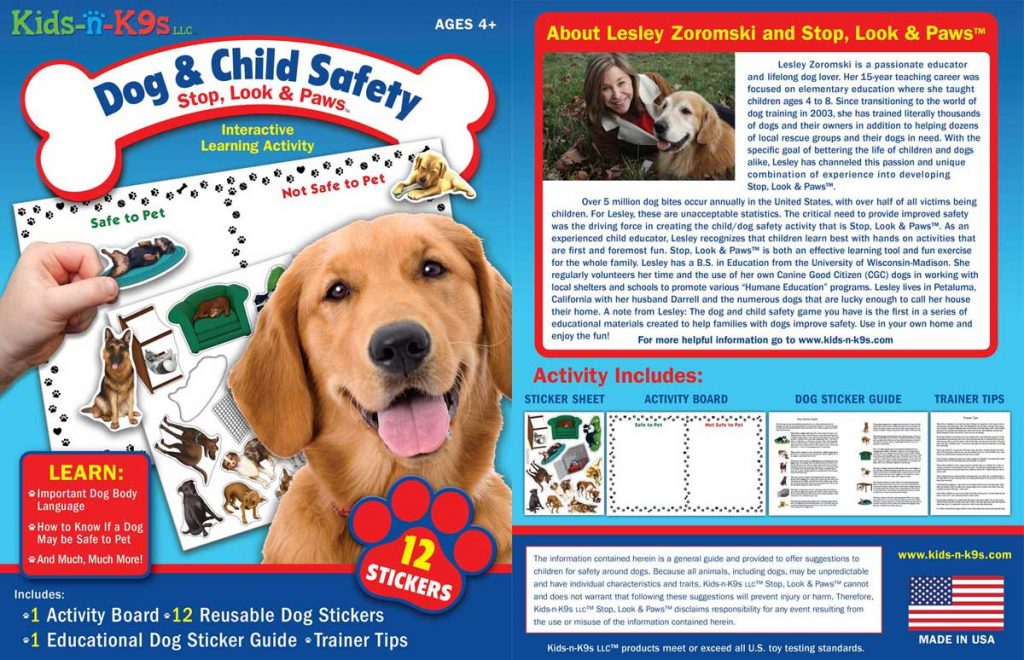If you could help a child avoid a dog bite, would you?
latest posts

- The Humane Society estimates 51% of dog bite victims are children.
- Getting bitten by a dog is the second most frequent cause of visits to emergency rooms for children according to a survey done.
- Children are also more likely than adults to need medical attention, and are far more likely to be severely injured.
As a former elementary school teacher and now current dog trainer, I have seen the results of dog bites to children.
When a dog bites an individual, whether it is a child or an adult, there is both physical and psychological trauma to overcome. This is especially upsetting when the dog is your own family pet. Hearing the stories that lead up to the bite, I found that many times these situations may have been avoided with prior knowledge regarding canine body language.
Learning about dogs and understanding how they communicate is very important for the entire family. Teaching both the dog and the children to have limits is another important factor. However, children love to interact with their dog, and this is very important for bonding, but they don’t always know safe games to play. In my Guidance & Games section I have provided some examples for fun ways for kids to interact with dogs as well as informative posts to give help to families for common issues they may encounter. Besides guidance and games, another helpful tool is the Stop, Look & Paws set.
I developed Stop, Look & Paws as one tool that can start the process of understanding some basic canine body language and that each dog can be uniquely different. Its purpose is to give children and their guardians an opportunity to work together using a hands-on learning activity to begin the process of understanding common scenarios and dogs body language.
Children learn best by using hands-on activities and by being encouraged to share their own thoughts about images that they see rather than just listening to a book being read. The guide that is written to the adults helps to give further background information on each illustration, Often times even the adult is surprised with the knowledge of why a dog should not be approached. I am a firm believer in explaining why something should not be done rather than just saying “don’t do it.”
Because there are so many nuances to canine body language, Stop, Look & Paws the concept of “reading” dog body language. Giving children the opportunity to use Stop, Look & Paws can empower them with helpful information to make thoughtful decisions in their future.







